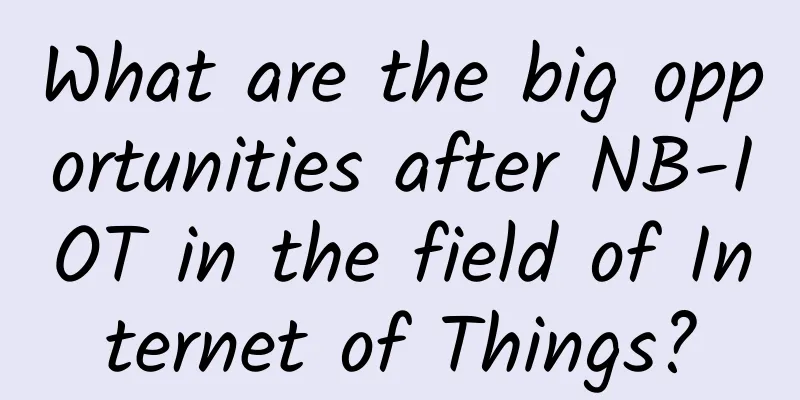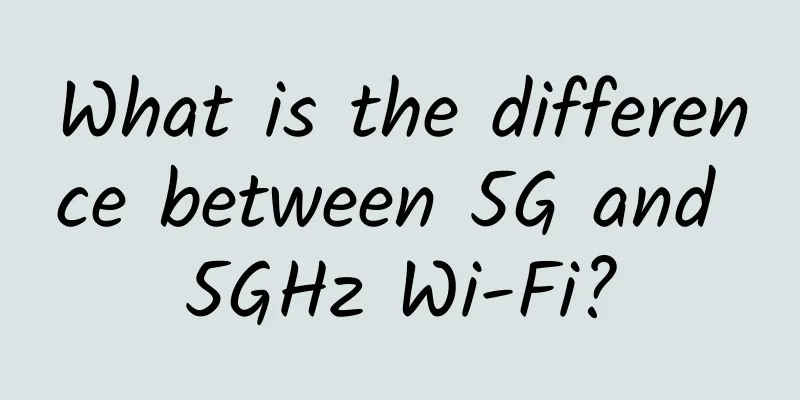What are the big opportunities after NB-IOT in the field of Internet of Things?

|
With the freezing of the R3 core standard of NB-IOT in 2016, a wave of IoT enthusiasm has been ushered in. This round of NB-IOT has lasted for more than a year and will soon enter the next stage. After NB-IOT, which technologies in the field of IoT will have great opportunities? Of course, the Internet of Things platform and edge computing are definitely opportunities for the future. Anyone with a little common sense will know that these two are opportunities for the future, so I won’t talk about them here! Search by NB-IOT characteristics Let’s take a look at the five characteristics of NB-IOT:
Grasp the two important features of NB-IOT: low power consumption and low cost. The communication mode of future devices requires low power consumption and low cost. Low power consumption and low cost will be the main features of the future Internet of Things. Look at the development bottleneck of the Internet of Things Looking at the development of the Internet of Things from a timeline:
NB-IOT solves the connection problem of low-power, low-cost devices, but how to solve the perception problem of low-power, low-cost devices? Grasping three key words: low power consumption, low cost, and perception, I believe MEMS will be the next explosive IoT technology. What is MEMS Microelectromechanical system (MEMS) technology is a high-tech technology with characteristic scales spanning the two tiny fields of micrometer and nanometer. It is a key core technology for the informatization of weapon equipment, including: MEMS electrostatic motor, silicon micro transmission mechanism, MEMS smart dust, silicon micro gyroscope, and chip atomic clock. As technology has developed, it has followed Moore's Law over the past 20 years: when the price remains unchanged, the number of components that can be accommodated on an integrated circuit will double approximately every 18-24 months, and the performance will also double. With the development of the IC industry, will Moore's Law become invalid? But beyond Moore's Law, there will be three development directions:
The difference between MEMS and IC is that MEMS has a movable structure and uses micro-nano technology to simultaneously process the mechanical structure and circuit system. MEMS Features MEMS features:
There is no need to talk too much about the other features: low cost, low power consumption and high integration. These three features are worthy of attention. After NB-IOT communication is perfected, it will inevitably stimulate the demand for low-power, low-cost, and small-sized sensors. MEMS technology has been developed for many years and is widely available. Now there are many MEMS sensors on mobile phones. The popularity of the Internet of Things will inevitably stimulate the demand for MEMS sensors. |
<<: How much does data center downtime cost?
>>: How to Evaluate DCIM Tools for the Modern Data Center
Recommend
10gbiz: Los Angeles CN2/Hong Kong CIA data center VPS monthly payment starts from $2.75
10gbiz has launched a promotion this month, offer...
AT&T is offering six months of Stadia Pro for free to 5G and fiber customers
Carriers are expanding their growing list of free...
HostSlick: AMD Ryzen/EPYC+NVMe series Netherlands VPS starts at 19.99 euros per year
HostSlick recently released some special packages...
Megalayer: Singapore native IP annual payment starts from 249 yuan, Singapore/Hong Kong/Philippines/US VPS annual payment starts from 199 yuan
Megalayer recently launched a VPS host in Singapo...
Easy to understand, this article will introduce you to the HTTP protocol?
1. What is http? Http protocol is Hypertext trans...
KVMLA: Singapore/Tokyo CN2+Softbank VPS 20% off, dedicated server 15% off, top up 500 and get 100
KVMLA is a Chinese hosting company founded in 201...
RAKsmart: San Jose dedicated server from only $30/month, Korea/Hong Kong/Japan/US cluster servers, 1-10G bandwidth servers
RAKsmart is a foreign hosting company operated by...
5G will make your 4G mobile phone obsolete. How can you become a "pig" in the 5G trend?
[[223756]] According to Gartner data, the total s...
Borui Data passed the CMMI Level 5 assessment, the first in the domestic APM field
Recently, Borei Data passed the CMMI Level 5 asse...
Edge computing has reached its climax! See how the three major operators fight the edge war
With the advent of the Internet of Everything era...
Mobile phone signal enhancement stickers are hot-selling, experts: The principle is not valid, and there is no obvious enhancement in actual measurement
Just stick a metal sticker on the "effective...
What the future of wide area network (WAN) management looks like
The recent surge in the number of employees worki...
RackNerd Mid-Autumn Festival Promotion, Los Angeles KVM Annual Payment Starting from $9.89
The Mid-Autumn Festival is still early, but the p...
5G: How businesses can prepare
5G is the marketing term for the fifth generation...
[Black Friday] HostHatch: 1TB large hard drive VPS for three years for $65 with double memory, multiple data centers in Hong Kong/Singapore/Los Angeles, etc.
I haven't shared information about HostHatch ...









